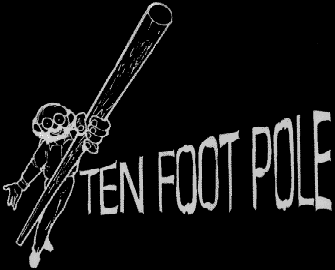It looks like you're using an Ad Blocker.
Please white-list or disable AboveTopSecret.com in your ad-blocking tool.
Thank you.
Some features of ATS will be disabled while you continue to use an ad-blocker.
share:

Or at least that is how Morton Smith, who was a professor of ancient history at Columbia University, would have had it. Professor Smith had a lot of ideas about the historical Jesus, but I have always been most interested in his ideas concerning the tattoos.
Hello ATS,
I have a subject that has never been touched upon in these forums, and I was wondering if you would like to check it out with me?
Please know in advance that I am no authority on Morton Smith and I have barely scratched the surface of his book, Jesus the Magician: Charlatan or Son of God?, upon which this thread is based. I have primarily read of his ideas referred to in other books or while reading on the web.
I would like to get right down to it. Here, in part, is Morton Smith's sketch of whom he had considered to have been the historical Jesus Christ from Smith's book, Jesus the Magician.
The son of a soldier named Panthera and a peasant woman married to a carpenter, Jesus was brought up in Nazareth as a carpenter, but left his home town and, after unknown adventures, arrived in Egypt where he became expert in magic and was tattooed with magical symbols or spells.
Returning to Galilee he made himself famous by his magical feats, miracles he did by his control of demons. He thereby persuaded the masses that he was the Jewish Messiah and/or the son of a god. Although he pretended to follow the Jewish customs, he formed a small circle of intimate disciples whom he taught to despise the Jewish Law and to practice magic. These he bound together and to himself by ties of “love,” (Smith, JtM. CH 4, P. 67).
Incidentally, Smith was not the only academic to have believed that Jesus, in part, became famous for his ability as a Charismatic Exorcist and that he had learned the trade in Egypt. Géza Vermes, who is considered to be the greatest living Jesus schiolar of his time, and is an authority on The Dead Sea Scrolls, also believed that Jesus was part of a rash of exorcists of all sorts, that were plying their services in the region at the time.
The primary source that Morton Smith uses to support his tattooed Jesus argument, is a passage from the Talmud that tells the story of the arrest of a distinguished rabbi named Eliezer which, according to Smith's research, occurred in 70-100 C.E.. Smith points the date out as being important, because he says that Eliezer would have likely been a close contemporary of the crucifixion.
Jesus in the Talmud is known as, Ben Stada, and it is a conversation between the accused rabbi Eliezar, and the judges reviewing his case that yields Smith's source.
The rabbi Eliezer questions whether or not “one who cuts letters on his flesh during the sabbath is guilty of violating the law prohibiting labor on that day” (Smith, JtM. CH 4, P.47). Eliezer, as Smith describes it, proceeds further to ask: “Did not Ben Stada bring witchcraft with him from Egypt in a cut that was on his skin?”.
Smith emphasizes that the story holds water because the tale is not part of polemic, as he says (Smith.JtM P.150), but, “is cited as a known and minor fact, in discussion of a legal question”. And Smith goes further with the quote from the Talmud by adding that the judges responded to Eliezar by saying, “He (ed. Jesus) was a madman, and you cannot base laws upon the actions of madmen”. Smith uses this part of the Talmudic quote to point out that the other rabbis to which Eliezar spoke knew exactly who Eliezar meant: Jesus the Egyptian.
As an authority on ancient history, Smith went on to state that Jesus being covered in tattoos of magical incantations would be very common, in terms of the era during which the Passion took place. Smith states (Smith.JtM P. 48) that the tattooing of magical emblems and words on the body was a common practice and that the incantations and directions for their use could be found in the relevant 'magical papyri' of the time. I can only assume that he must have meant the time of the later Ptlomies and Cleopatra.
Smith also used Galatians 6:17 to support his argument that Paul also bore the same tattoos as Jesus did...
“Henceforth let no man trouble me; for I bear branded on my body the marks of Jesus”
-ASV
And Smith's book continues with increasingly outrageous claims. But the tattoo thing has always stuck with me, and I thought I would bring it to you.
Wadda ya think, ATS?
Jesus the Magician: Charlatan or Son of God?. Morton Smith. 1978. Harper and Row.
edit on 13-3-2013 by Bybyots because: .
reply to post by AfterInfinity
I aim to please; but it appears that this thread has its 'somebody-else's-problem-field' up and activated.
Oh well.
Thanks for coming by,
I aim to please; but it appears that this thread has its 'somebody-else's-problem-field' up and activated.
Oh well.
Thanks for coming by,
edit on 13-3-2013 by Bybyots because: A.S.E.P. wins!
reply to post by Bybyots
touchy subject that jesus, i've noticed on related threads here that it makes people sees words that arent there, and miraculously avoid ones that are.
devilishy handsome chap though, in an 80's kurt russel/david coverdale kind of way i would have given him a full-on mullet though. and possibly double-denim
anyway, gratuitous bump out of the way, i'm gonna have to save reading, the linkybits and involvement for later, once people get over the fear and stuff, this could get very interesting
touchy subject that jesus, i've noticed on related threads here that it makes people sees words that arent there, and miraculously avoid ones that are.
devilishy handsome chap though, in an 80's kurt russel/david coverdale kind of way i would have given him a full-on mullet though. and possibly double-denim
anyway, gratuitous bump out of the way, i'm gonna have to save reading, the linkybits and involvement for later, once people get over the fear and stuff, this could get very interesting
reply to post by skalla
Hi skalla,
Thanks for the vote of confidence. I suppose the title may have been a bit off putting, considering this sensitive time with the Pope, and all.
I am still hopeful that others will take an interest, but looks like it just slipped through like #e through the proverbial goose.
Cheers,
Hi skalla,
Thanks for the vote of confidence. I suppose the title may have been a bit off putting, considering this sensitive time with the Pope, and all.
I am still hopeful that others will take an interest, but looks like it just slipped through like #e through the proverbial goose.
Cheers,
Thought you'd atleast have people calling you a heratic (or words to that effect)
I like it i've always been told my ink is tantamount to desecration of my god given body.
Strangely by my mother
I don't see why people still have a problem with it,as far as i can see it's as old as the written word.
(possibly older)
Nice find
I like it i've always been told my ink is tantamount to desecration of my god given body.
Strangely by my mother
I don't see why people still have a problem with it,as far as i can see it's as old as the written word.
(possibly older)
Nice find
Hello,
This is a huge leap on my part, but it is next to impossible to find anything that might actually reflect what these guys may have tattooed on themselves.
It seems that if Jesus and others had these tattoos, and if Smith thought that they would be incantations from current magical papyri, then the script was likely in a Hieratic font.
Hieratic script is a cursive form hieroglyphics, and it was used in Egypt through the late Ptolemaic period, and so it may be possible that this is the type of script that was used to write the incantations that made up the tattoos that Smith insists that Jesus and Paul had.
This particular script is from the Prisse Papyrus, which is thought to have been created in the 12th dynasty Egyptian Middle Kingdom...

I thought that it would at least give us some food for thought, in terms of what these tats might have looked like.
Thanks again for stopping by.
This is a huge leap on my part, but it is next to impossible to find anything that might actually reflect what these guys may have tattooed on themselves.
It seems that if Jesus and others had these tattoos, and if Smith thought that they would be incantations from current magical papyri, then the script was likely in a Hieratic font.
Hieratic script is a cursive form hieroglyphics, and it was used in Egypt through the late Ptolemaic period, and so it may be possible that this is the type of script that was used to write the incantations that made up the tattoos that Smith insists that Jesus and Paul had.
This particular script is from the Prisse Papyrus, which is thought to have been created in the 12th dynasty Egyptian Middle Kingdom...

I thought that it would at least give us some food for thought, in terms of what these tats might have looked like.
Thanks again for stopping by.
reply to post by cjttatu
Well, they'd be correct.
I'm nothing if not heretical.
Jesus loves his heretics, too, I am thinking.
Thanks for posting,
Thought you'd atleast have people calling you a heratic
Well, they'd be correct.
I'm nothing if not heretical.
Jesus loves his heretics, too, I am thinking.
Thanks for posting,
reply to post by Bybyots
Interesting topic. I wonder if Jesus wore a swastika?
According to Revelation 19, Jesus will have a tatoo on his thigh!
How about that?
Interesting topic. I wonder if Jesus wore a swastika?
According to Revelation 19, Jesus will have a tatoo on his thigh!
16 And he hath on his vesture and on his thigh a name written, King Of Kings, And Lord Of Lords.
How about that?
Originally posted by cjttatu
Thought you'd atleast have people calling you a heratic (or words to that effect)
I like it i've always been told my ink is tantamount to desecration of my god given body.
Strangely by my mother
I don't see why people still have a problem with it,as far as i can see it's as old as the written word.
(possibly older)
Nice find
Its not even good herecy. The whole story is so very weak as to go under the heading of mind vapors.
You must mean the tattoo that was on his space suit:


edit
on 13-3-2013 by phantomjack because: (no reason given)
reply to post by Logarock
Yeah, that's what I'm told, Logarock.
And that's why I left that part out; for discerning members such as yourself.
So have at it; please elucidate on these weaknesses that you find in Smith's reasoning.
Thanks for being here,
Its not even good herecy. The whole story is so very weak as to go under the heading of mind vapors.
Yeah, that's what I'm told, Logarock.
And that's why I left that part out; for discerning members such as yourself.
So have at it; please elucidate on these weaknesses that you find in Smith's reasoning.
Thanks for being here,
just a brief pass through, but re what the tats may look like, look up the siberian shaman-ess excavated some 15 (?) yrs ago - oetzi may have been
partially tatted too but maybe i'm getting mixed up... i'll try look up pics later if need be.. different areas and times, but it may shed some
light, who knows.
Originally posted by windword
reply to post by Bybyots
Interesting topic. I wonder if Jesus wore a swastika?
According to Revelation 19, Jesus will have a tatoo on his thigh!
16 And he hath on his vesture and on his thigh a name written, King Of Kings, And Lord Of Lords.
How about that?
Indeed, friend, that quote is part of Smith's argument, as well as being an argument of Professor Page Dubois', from UCSD.
Thanks for posting.
edit on 13-3-2013 by Bybyots because: .
time's kinda slipping thru my fingers right now and i still havent even had a chance to read the op in full, but i've done a little digging on the
tattoo thing and it sure aint easy.
trouble is there are "magic" tattoos in Thailand associated with "heiratic movements" that really bork up clean searching etc. meh
found very little in some quick searches (mostly image based) but i did find these..

critink.tumblr.com...
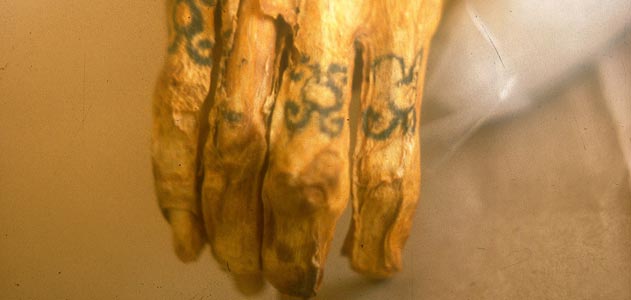
misbehavedraven.wordpress.com...

lorrainerimmerillustrator.blogspot.co.uk...
from egypt, but i had no chance to look deeper etc..
you may well know about the excavated siberian shaman-ess..5th century BCE
en.wikipedia.org...
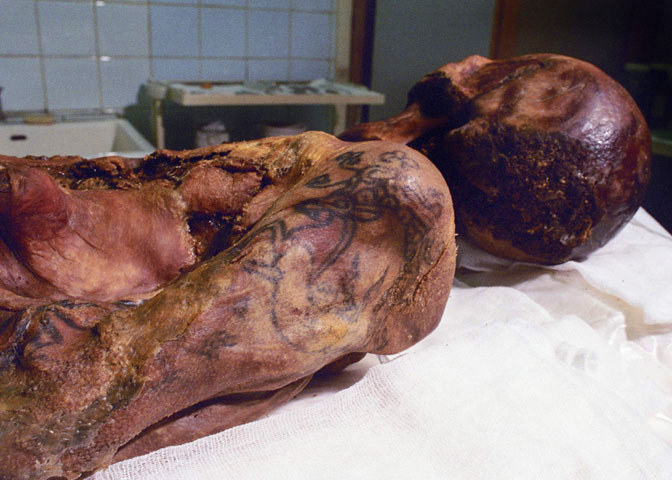
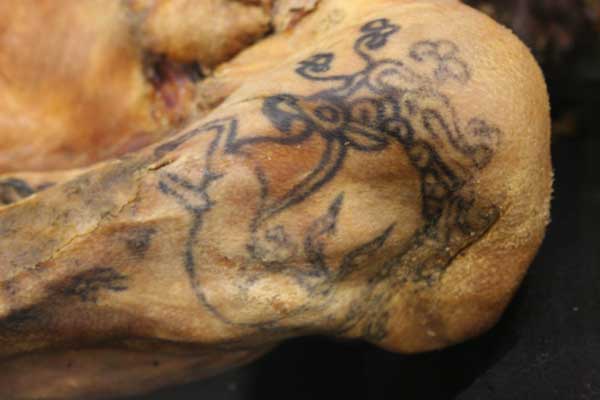
and otzi/oetzi
www.iceman.it...
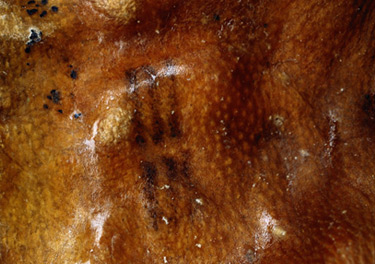
though these of course are not levantine, egyptian, or within about 500 yrs of the right time
that dude in the mummy movies has groovy tats, but thats just hollywood - did they have a source we missed though??
thats all i can add for now
trouble is there are "magic" tattoos in Thailand associated with "heiratic movements" that really bork up clean searching etc. meh
found very little in some quick searches (mostly image based) but i did find these..

critink.tumblr.com...

misbehavedraven.wordpress.com...

lorrainerimmerillustrator.blogspot.co.uk...
from egypt, but i had no chance to look deeper etc..
you may well know about the excavated siberian shaman-ess..5th century BCE
en.wikipedia.org...


and otzi/oetzi
www.iceman.it...

though these of course are not levantine, egyptian, or within about 500 yrs of the right time
that dude in the mummy movies has groovy tats, but thats just hollywood - did they have a source we missed though??
thats all i can add for now
edit on 13-3-2013 by skalla because: clarity
just a thought, but someone with a good knowledge of Grimoires may be able to help - my best contact for that sort of stuff is hiding out in wilds of
scotland now unfortunately, but there are bound to be a few folk here who fit the bill though, hopefully they will call by...?
reply to post by skalla
I might be able to help. What did you have in mind, skalla? I know that some scholars like to point out Merkaba mysticism as being what Jesus was involved in, in Egypt, along with various strains of proto-kabbalistic magic. But aside from sifting through 'papyri' related to the time (hard to do on the web), I am not sure which grimoires would be helpful.
I might be able to help. What did you have in mind, skalla? I know that some scholars like to point out Merkaba mysticism as being what Jesus was involved in, in Egypt, along with various strains of proto-kabbalistic magic. But aside from sifting through 'papyri' related to the time (hard to do on the web), I am not sure which grimoires would be helpful.
reply to post by Bybyots
it's not something i'm knowledgable on, but an old friend of mine with a wealth of experience in the matter often chatted on such things, i got the impression it may be an avenue of investigation - i couldnt say which grimoires sadly, and we are not in contact at present
it's not something i'm knowledgable on, but an old friend of mine with a wealth of experience in the matter often chatted on such things, i got the impression it may be an avenue of investigation - i couldnt say which grimoires sadly, and we are not in contact at present
reply to post by skalla
Hrm,
Well, I think that you might be on to something. Smith seemed to think that Jesus was initially taken up in a syncretic way by local pagans and worshiped and evoked and invoked like any of the others in their pantheon. It would not be the first time as the same thing happened much later in place like Haiti and Sierra Leone.
All that to say that we should then expect His (Jesus') name to pop up in things like grimoires, and especially magical papyri; and it does, according to Smith, we just have to start digging those up. Probably best to go to Smith but I won't be able to for several hours.
I hope you are able to make contact with your buddy; I see what you mean: we just need a lead.
Hrm,
Well, I think that you might be on to something. Smith seemed to think that Jesus was initially taken up in a syncretic way by local pagans and worshiped and evoked and invoked like any of the others in their pantheon. It would not be the first time as the same thing happened much later in place like Haiti and Sierra Leone.
All that to say that we should then expect His (Jesus') name to pop up in things like grimoires, and especially magical papyri; and it does, according to Smith, we just have to start digging those up. Probably best to go to Smith but I won't be able to for several hours.
I hope you are able to make contact with your buddy; I see what you mean: we just need a lead.
new topics
-
Steering the Titantic from the Drydock.
US Political Madness: 1 hours ago -
Paramilitary Leaks - John Williams
Whistle Blowers and Leaked Documents: 11 hours ago
top topics
-
House Passes Laken Riley Act
Mainstream News: 13 hours ago, 23 flags -
What Comes After January 20th
Mainstream News: 16 hours ago, 18 flags -
Hearing more ambulances lately
Medical Issues & Conspiracies: 12 hours ago, 7 flags -
Los Angeles brush fires latest: 2 blazes threaten structures, prompt evacuations
Mainstream News: 12 hours ago, 7 flags -
Paramilitary Leaks - John Williams
Whistle Blowers and Leaked Documents: 11 hours ago, 6 flags -
Let's Buy Greenland
General Chit Chat: 17 hours ago, 6 flags -
Those stupid GRAVITE commercials
Rant: 16 hours ago, 5 flags -
The more I think about it
General Chit Chat: 14 hours ago, 4 flags -
Canada as a state .. how would it work?
General Chit Chat: 16 hours ago, 4 flags -
Steering the Titantic from the Drydock.
US Political Madness: 1 hours ago, 4 flags
active topics
-
Steering the Titantic from the Drydock.
US Political Madness • 3 • : ufoorbhunter -
Meta Llama local AI system is scary good
Science & Technology • 49 • : glend -
Canada as a state .. how would it work?
General Chit Chat • 17 • : FlyersFan -
-@TH3WH17ERABB17- -Q- ---TIME TO SHOW THE WORLD--- -Part- --44--
Dissecting Disinformation • 3968 • : AianawaQ1320 -
Gravitic Propulsion--What IF the US and China Really Have it?
General Conspiracies • 34 • : Lazy88 -
Let's Buy Greenland
General Chit Chat • 16 • : Freeborn -
Post A Funny (T&C Friendly) Pic Part IV: The LOL awakens!
General Chit Chat • 8000 • : KrustyKrab -
Los Angeles brush fires latest: 2 blazes threaten structures, prompt evacuations
Mainstream News • 13 • : BeyondKnowledge3 -
House Passes Laken Riley Act
Mainstream News • 16 • : KrustyKrab -
Planned Civil War In Britain May Be Triggered Soon
Social Issues and Civil Unrest • 16 • : Freeborn

